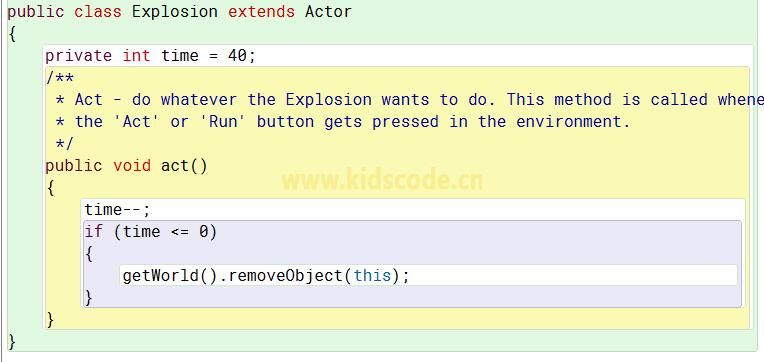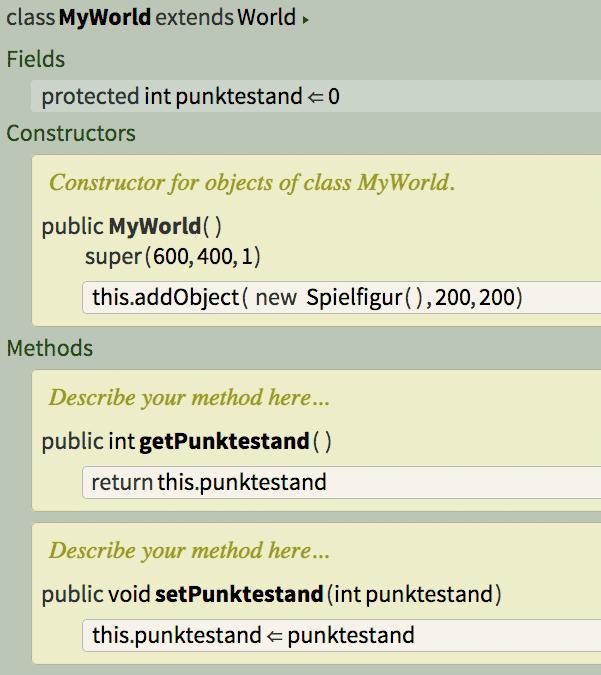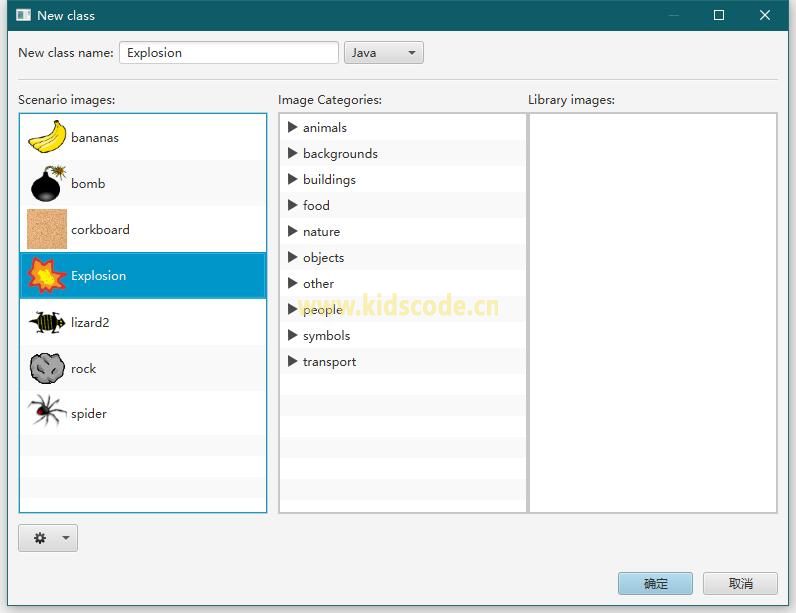

- #Getworld greenfoot full
- #Getworld greenfoot software
- #Getworld greenfoot code
- #Getworld greenfoot series
This is a simplistic threading model however, it provides a great opportunity for students to learn about the consequences of wasteful processes and encourages efficient code. The act() method will be called by Greenfoot in a round-robin fashion on each object and this process will repeat as long as the scenario is running. Both of these classes have an act() method which should be overridden with the desired behavior for the World or Actor. Actors are visual representations of objects which can interact with one another and the world. World represents the canvas and provides the cell size and coordinate system for positioning the Actors. These two are the base classes for everything that will have a visual representation in the scenario. The two primary classes that will be used in any scenario are World and Actor. The Greenfoot API is made up of only five classes (for details, see Greenfoot Java docs).
#Getworld greenfoot full
There are just a few classes to learn in order to make full use of the platform.
#Getworld greenfoot code
It greatly lowers the bar for building graphical applications in Java this is important because the quick positive feedback inspires students to work with the code more. Greenfoot was built by some of the same people who created BlueJ: Poul Henriksen, Michael Kölling, Davin McCall, Bruce Quig ( BlueJ, by the way, is a great teaching tool for understanding simple Java object relationships via UML.) Although Greenfoot uses the same UML as BlueJ to clearly show the object oriented design of each scenario, its true power resides in object visualization. The goal is to target students in the pre-teen years and older by providing a development environment which is both engaging and flexible. Greenfoot is a joint project funded by Sun Microsystems and implemented at the University of Kent at Canterbury (UK) and Deakin University, Melbourne (Australia). Because Greenfoot has built-in support for exporting scenarios to applets and the web, it provides a very easy way to quickly prototype games, utilities and other ideas. This gives teachers of other subjects an easy-to-use tool to create domain specific visual scenarios for students. In addition to teaching programming, Greenfoot can also be used as a meta framework for micro worlds. Greenfoot solves this problem by creating a live object world framework in which students interact with new objects as they are developed. Students can also be discouraged with all the scaffolding that must be built before their creations come to life.


However, don't let this discourage you from letting your little ones try out Scratch.īeing proficient enough with programming to be able to write Java source using Eclipse or any of the other popular IDEs is the ultimate goal, but new students who find Scratch easy often find a fully integrated development environment intimidating. When this happens, it should be taken as a sign that it's time to move on to a more powerful platform like Greenfoot. For this reason, it has its limitations (such as no dynamic object creation), which can lead to frustration once the platform is mastered.
#Getworld greenfoot series
Scratch distills programming down to a series of drag and drop operations. It's a great environment that requires only basic reading and math skills anyone six and up would have a blast with it. One very popular platform for teaching the basics of programming logic is Scratch from the Lifelong Kindergarten group at the MIT Media Lab. Homeschooling parents, computer science instructors and tutors continually seek new and engaging ways to teach children computer skills.
#Getworld greenfoot software
Greenfoot: a live object world for studentsīy Nathan Tippy, OCI Senior Software Engineer

Greenfoot, a live object world for students.


 0 kommentar(er)
0 kommentar(er)
